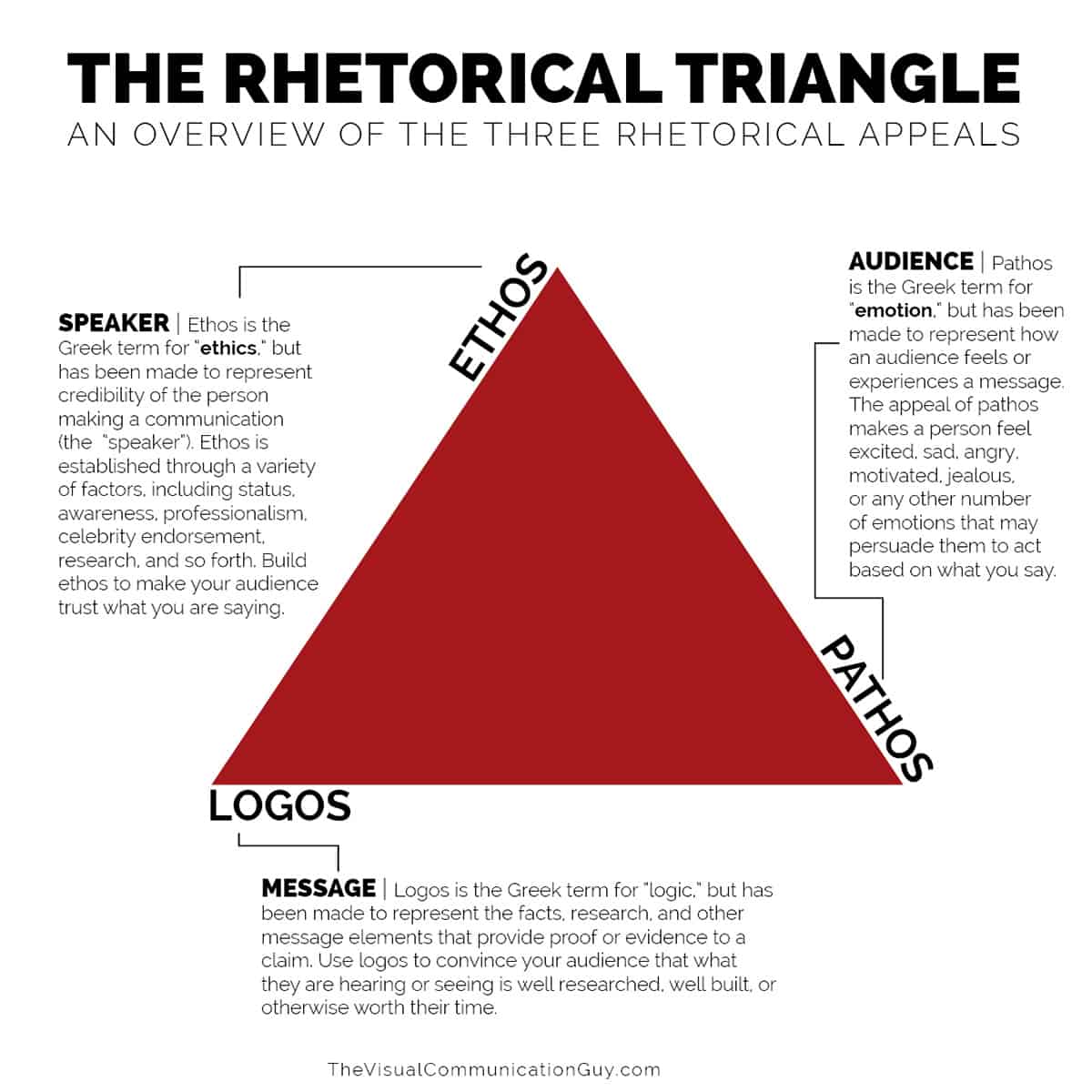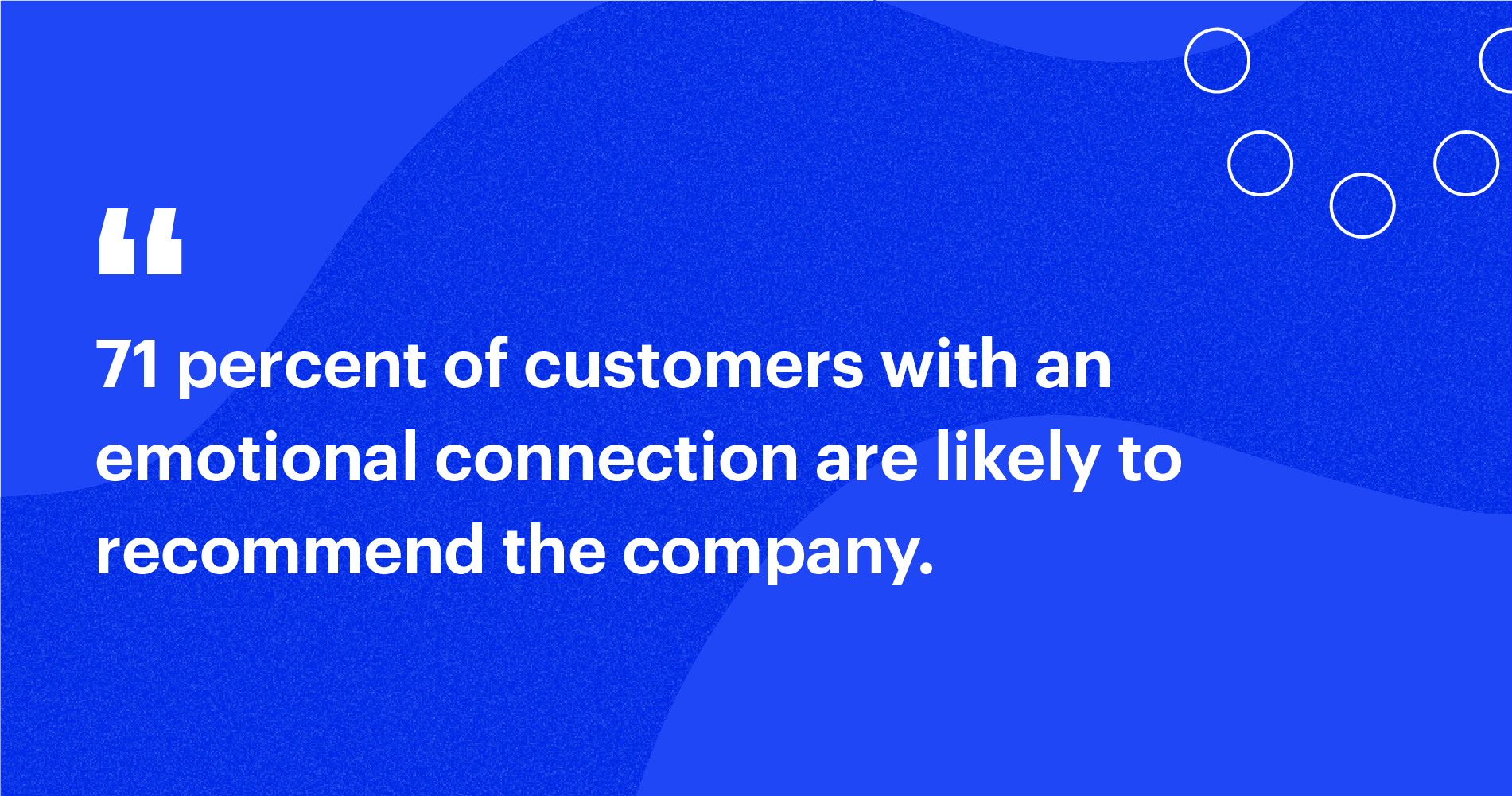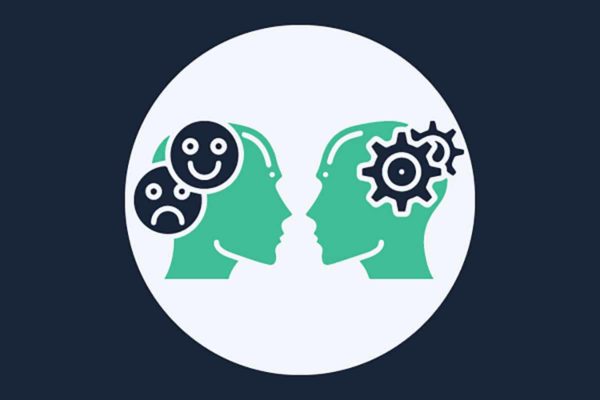Emotional advertising lets you use emotions to encourage customers to purchase your products. One way to approach emotional marketing is via the rhetorical triangle. This triangle’s three sides are the speaker (ethos), audience (pathos), and message (logos). Your advertising strategy will include all three of these elements, and emotional advertising lets you create a message that connects with your audience.

You can also learn to understand emotional marketing without the rhetorical triangle. This guide will help you understand what it is, why it is important, and showcase some emotional marketing examples for inspiration.
What is emotional advertising?
Emotional marketing refers to when your message uses human emotion to connect deeper with your audience. It is very common for emotional marketing to just appeal to one emotion, such as joy, anger, or fear. However, it can appeal to multiple emotions, and you can technically use any emotion you want.
The importance of emotions in marketing
Emotional appeal advertising can play a key role in marketing for several reasons, including the following.
Emotions make your product more memorable
When you play on emotions, you will get the advantage of your advertising being more memorable. Research shows that people are more likely to have long-lasting memories of emotionally charged events.
This translates into marketing as well. Simply put, by creating advertising that has an emotional impact on your audience, it is much more likely that your content and, therefore, your brand will stay in their heads.
Emotions forge connections
When you trigger emotions in your audience, you help form connections with them. This, in turn, leads to customer loyalty and a likely increase in brand advocates. In fact, one study found customers who emotionally connect with a brand’s lifetime value is 306% higher. The same study found that 71% of customers with an emotional connection are likely to recommend the company. By contrast, the average rate of people likely to recommend a given company is just 45%.

Emotional content is more shareable
No matter the type of emotions you convey in your emotional marketing, this strategy makes your advertising highly shareable. That is because people love sharing content that makes them feel something. This applies to both positive and negative emotions.
It can deliver better results
One study even found that ads with emotional pull were more effective than those with more rational content. That study found success rates of 31% and 16%, respectively. In other words, an emotional message almost doubled the success rate when compared to only rational content.

6 Examples of brands that did it right
To get you started on your journey to using emotional marketing, look at some examples of brands that did an excellent job with it. Some also use some tips you will find in our attraction marketing guide. The following are mostly more prominent brands, but all of their strategies work just as well, if not better, for small, local businesses.
Consider looking at the following marketing efforts to get inspiration for your content marketing strategy.
Spartan’s “Grow Young” Instagram ad
Spartan, a tough racing community, shows that your brand doesn’t need to be a household name to take advantage of emotional advertising. It plays on the idea that everyone is young at heart and that anyone can do this activity. The ad features videos of people completing the challenging races and obstacle courses, and it highlights people of all ages, sizes, and ethnicities. The ad also strongly plays on the emotion of happiness, as nearly everyone in the video is smiling.
Code Salon’s pride month Facebook posts
In 2021, Code Salon played on emotions and connected with the public during Pride Month via a series of Facebook posts. The series of posts featured LGBTQ+ employees and staff, each of whom shared “what makes them proud.” This plays into happiness and the feeling of connecting with the community. Customers feel happy when seeing this content, so positive impressions form of the brand.
Wren’s first kiss video
In 2014, Wren, a clothing brand, showed how emotional marketing can go viral. Its “first kiss” video showed two strangers kissing and led to a boost in sales of almost 14,000%. Its success comes from the intense emotions in the video and the fact that the brand was only mentioned subtly.
P&G’s “Thank You, Mom – Strong”
P&G offers a great example of emotional marketing in its “Thank You, Mom” ad from before the 2014 Winter Olympics in Sochi. This ad plays on the emotional connections of moms and their children. It features Olympians and highlights how their moms supported them to get where they are. This plays into the emotions of one of P&G’s target audience groups, moms, making them feel particularly valued by the company.
Lysol’s “Protect Like a Mother”
Another example of emotional marketing that plays on the emotions of a mother comes from Lysol. Their ad “Protect Like a Mother” features a mom standing in front of dangerous animals, indicating she protects her children from them. This example aims to empower mothers while also building trust in the brand.
Apple’s “Think Different” campaign
Apple’s “Think Different” campaign was so successful that it earned the 1998 Emmy for Best Commercial. Apple used the slogan between 1997 and 2002. This campaign played on the satisfaction of changing the status quo and innovating.
How does emotional marketing work?
While most of the above examples of emotional marketing are for major international brands, it works just as well for small businesses. In fact, many small businesses may do even better with emotional marketing because they are more likely to have a closer relationship with clients already.
You can take advantage of a few trends in emotional marketing to get the results you want for your small business. You’ll notice that these cover all of the basic emotions, with each type of emotional response leading to a different result. That being said, any strong emotional reactions can lead to the positive results you want.
Remember that SMS marketing is among the most effective ways to spread your message, thanks to its 98% open rate and customers’ general preference for businesses contacting them over text than in any other way.

Sadness = more clicks
When we experience feelings of sadness, this can generate more clicks.
This comes from the fact that sadness leads to connections and empathy. Importantly, empathy leads to the motivation to help others and altruism. This is why the ASPCA’s ads use sad photos and music to encourage donations.
Although your business probably doesn’t need donations, the use of sadness still translates into clicks. It is the way that people can give back after feeling these emotions.
Anger/disgust = viral content
When people feel anger or disgust, they tend to vent about it, which leads to content going viral. So, you should consider incorporating anger and related human emotions into advertising when you want to take advantage of viral marketing.
This connection between eliciting anxiety and anger and increasing your content’s spread or viral nature has even been confirmed in research.
Happiness = more shares
If you want to encourage more shares for your content, then focus on happiness. Research shows that positive content and good news travels more quickly on social media. Harness this to get more shares for your content and advertising.
This is also related to the idea of the “social smile.” This refers specifically to babies smiling when others smile, but it also applies to adults. In adults, it is the fact that happiness tends to spread, so if someone else feels happy, you tend to feel happy as well. This, in turn, encourages sharing of the content that made you smile. Companies can take advantage of this by including happy customers in their marketing.
Fear/surprises = loyalty
When people experience fear or surprise, they want to stick to familiar and comfortable things. Using those emotions in your advertising encourages people to stick to your brand, as it is familiar. That leads to brand loyalty.
Many marketers feel hesitant to use the emotion of fear, as you don’t want negative feelings associated with your brand. But when done right, you can make your business seem like one of the few good things in the scary or surprising world.
Conclusion
Emotional appeal advertising is successful because people tend to have stronger memories of events connected with strong emotions. Emotional content is also highly shareable, as shown by the viral examples of good emotional advertising mentioned above.
Local businesses can harness the power of emotions across their advertising campaigns, from SMS to digital ads to social media posts. Develop emotional marketing strategies that create positive feelings in your target audience, and you’ll notice an increase in sales and engagement thanks to those emotional responses.



